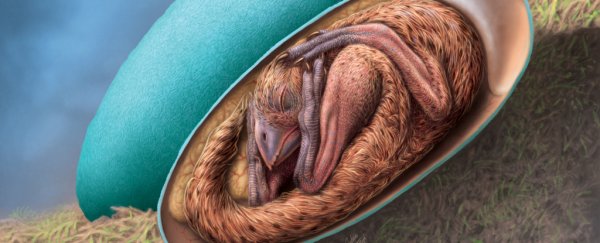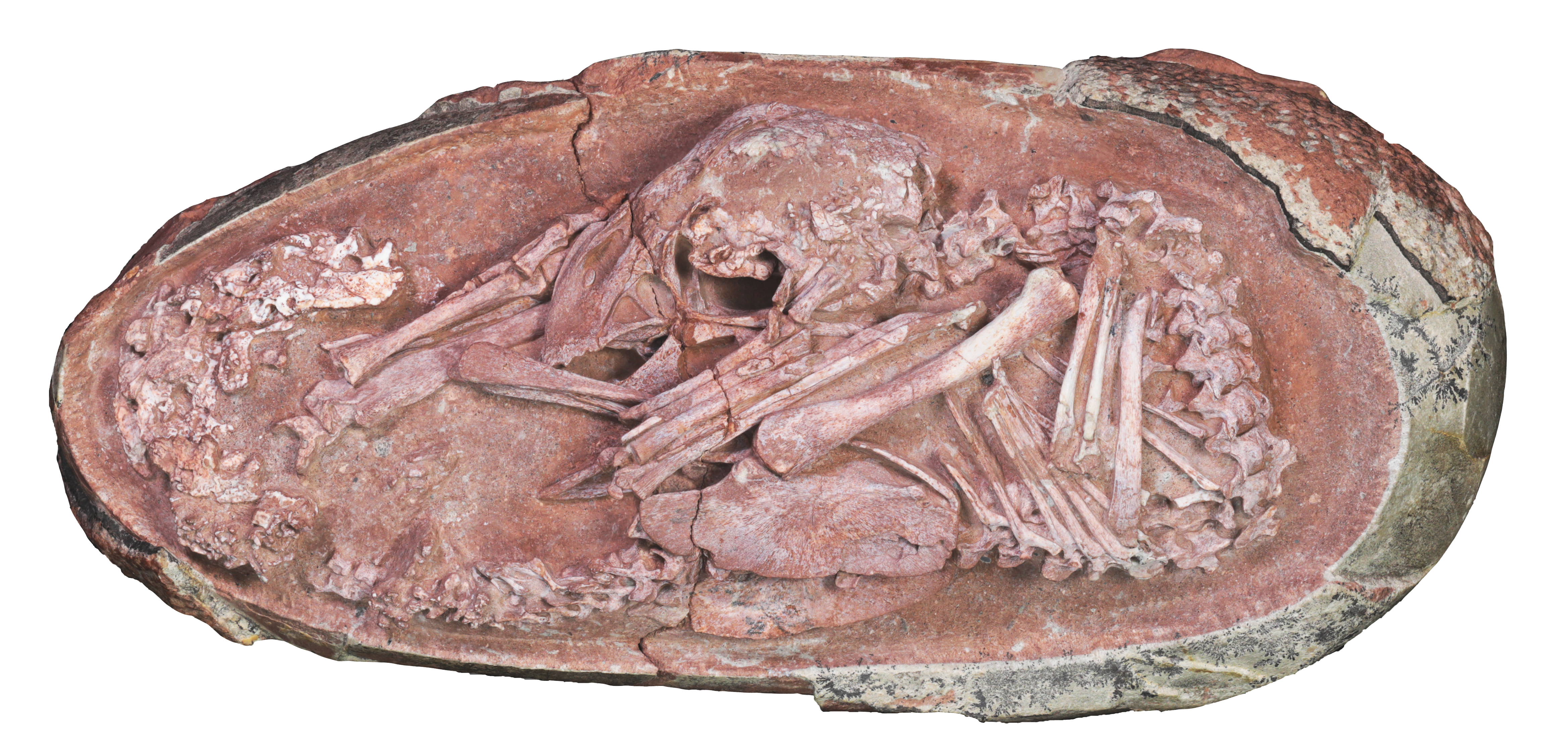A rare and exquisitely preserved dinosaur embryo tucked inside an egg like a baby bird has been unearthed in southern China, providing an “unprecedented glimpse” into dinosaur development.

With a posture that resembles modern bird embryos close to hatching, the fossilized embryo is a remarkable find which raises the possibility that evolutionary links between modern birds and extinct dinosaurs run far deeper than previously thought.
“This dinosaur embryo inside its egg is one of the most beautiful fossils I have ever seen,” paleontologist and study author Steve Brusatte at the University of Edinburgh said in a statement.
“This little prenatal dinosaur looks just like a baby bird curled in its egg, which is yet more evidence that many features characteristic of today’s birds first evolved in their dinosaur ancestors.”
The embryo lying inside its fossilized egg dates between 72 and 66 million years old, and was identified as an oviraptorosaur, a group of feathered theropod dinosaurs which had distinct toothless, parrot-like beaks and sometimes elaborate crests as well.
 Photo of the oviraptorosaur embryo inside its fossilized egg. (Xing et al., iScience, 2021)
Photo of the oviraptorosaur embryo inside its fossilized egg. (Xing et al., iScience, 2021)
Like all other non-avian dinosaurs, oviraptorosaurs went extinct at the end of the Cretaceous, around 66 million years ago, when an asteroid struck Earth. Birds, evolved from earlier theropods, somehow survived this event.
This latest find is a long-awaited discovery, and one that might not have surfaced had museum staff not uncovered the fossil which had been sitting in storage for about ten years.
“We were surprised to see this embryo beautifully preserved inside a dinosaur egg, lying in a bird-like posture,” said Waisum Ma of the University of Birmingham. “This posture had not been recognized in non-avian dinosaurs before.”
Most of the other non-avian dinosaur embryos discovered to date are incomplete and their skeletons disjointed, but this fossilized egg contains one of the most complete non-avian dinosaur embryos found yet – and it suggests tucking behavior might have evolved prior to the origin of modern birds.
The almost-complete skeleton measuring roughly 23.5 cm (9.3 inches) from head to tail is curled up inside the elongated fossilized egg, which is nearly a whole 7 cm (2.7 inches) shorter than the embryo.
Showing some impressive mobility, the embryo’s clawed forelimbs are nestled on either side of its skull, which is tucked towards the base of its looping tail, as you can see in the life-like digital reconstruction below.
This tucking posture was thought to be unique to birds, which bend their bodies and tuck their heads under a wing to ready themselves for hatching.
While the precise developmental stage of the embryo, named ‘Baby Yingliang’, is not known, and the relationship between tucking and hatching is still uncertain for extinct theropods, this rare specimen preserved in superb detail provides some cracking insights into dinosaur development and evolution.
Comparisons showed the embryo lay in a posture distinct from their more distant dinosaur cousins, long-necked sauropodomorphs, and very similar to chicken embryos days before they hatch.
Based on these analyses, the team of researchers describing the find suggests that tucking behavior first evolved in theropod dinosaurs many tens or even hundreds of millions of years ago. Additional embryo fossils – not only of theropod dinosaurs but also of sauropodomorphs – would be needed though, to put that theory to the test.
“This new exceptional fossil embryo hints that some early developmental behaviors (tucking) often considered as uniquely avian may be rooted more deeply in the theropod lineage,” write the researchers.
Other features of bird-like reproduction, such as parent dinosaurs incubating nests of eggs, have been observed in theropod dinosaurs before. One member of the theropod family, a fossilized troodontid, was even found with its head tucked under its forelimb in a sleeping posture common in modern birds.
But since there are only a handful of fossilized dinosaur embryos discovered to date, and few specimens preserved in such detail, making meaningful comparisons of embryonic development in dinosaurs is difficult to say the least.
“This is why pre-hatching postures and behaviors for dinosaurs have been so unclear,” Ma, Brusatte, and colleagues write.
Using what material is available, the researchers were able to compare the new find to two other oviraptorid eggs containing embryos which showed some differences in curling posture that may represent various tucking stages in embryo development, just days apart.
Until the next specimen is unearthed, the researchers behind this latest discovery plan to delve into the embryo’s skull bones and, using various imaging techniques, unveil other body parts that are still covered in rocks.
The study was published in iScience.


